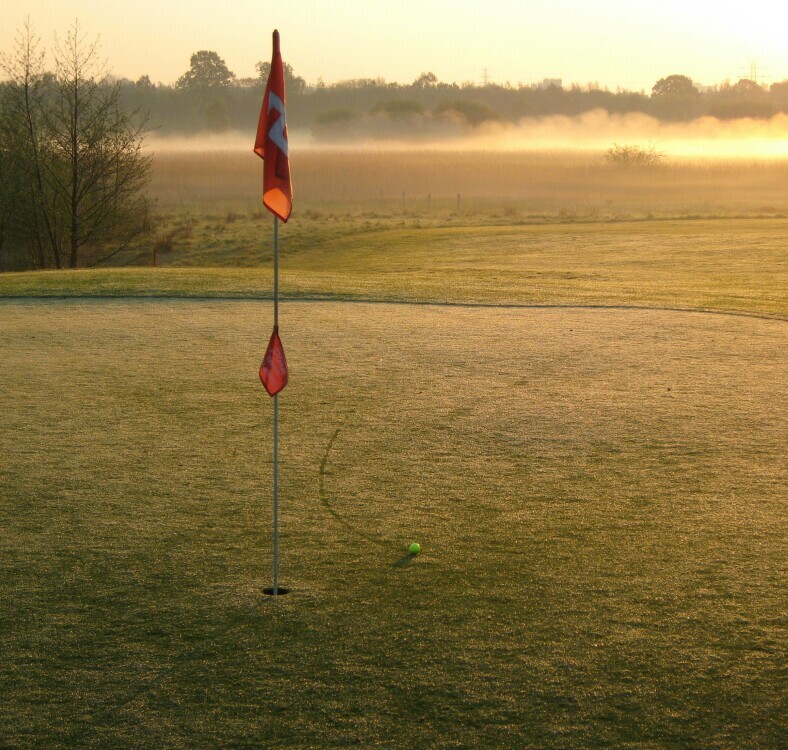Golf Scores Explained


Fore! Quick note: a few links here are affiliate links. If you snag gear through them, I earn a small commission — no extra strokes added to your game.
Golf scoring can seem confusing at first, but once you get the hang of it, it’s pretty straightforward. Scoring in golf is all about the number of strokes a player takes to get the ball from the tee to the hole. The main goal: the fewer strokes, the better. It’s simple once you get used to it, but let’s nail down how golf scoring works so that you can keep track on your scorecard so you can work on making it better. We’re talking golf scoring here, so come have a seat with the golf viking.
Points are calculated based on the number of strokes taken relative to par, which represents the number of strokes an expert golfer is expected to need to complete a hole. For example, if a hole has a par of 4 and you take 4 strokes, you’re at par. If you take 3 strokes, you’re one under par, commonly called a birdie. More strokes? That’s over par, or a bogey.
Par is crucial because it serves as a benchmark. Each hole on a golf course is assigned a par, and the course itself has a total par, which is the sum of all individual hole pars. Knowing the par helps you understand what’s considered an average score on each hole and for the entire course. Your score on each hole is relative to the number of the par.
So for every hole there is a par, which is the mark for how many strokes it should take you to get into the hole. Golf courses will have holes that are par-3 , par-4, and par-5. So this means that to maintain par you will need to get your ball in the hole in 3, 4, or 5 strokes accordingly. If you do this and maintain par for each hole and thus the course, congratulations, you are pretty darn good at golf. If you don’t, don’t feel bad. Most golfers struggle to get par unless they are truly experienced. So don’t fret about your score if you are just starting out, you will have a long journey ahead to work on your golf game before you can get pars consistently.
One common mistake beginners make is not accounting for penalties. Penalties can arise from hitting the ball out of bounds, into a water hazard, or for taking an unplayable lie. These all add extra strokes to your score, which can quickly add up and impact your final score. So this is why hitting your ball in the water is something to be avoided, because ultimately your score will get worse.
Always check the rules of the course and be aware of potential penalties along the way. If you are just playing with friends you may have your own way of dealing with penalties, but if you are playing any sort of competitive golf then you will need to be aware that hitting your ball in hazards such as water will add an extra stroke to your score. Let’s go over some golf terms that will help you understand what you’re trying to achieve on the course.
Before diving into scoring terms, make sure you understand the basic rules for golf.
Ready to level up your golf game? Click here.

Breaking Down Golf Terms: Bogeys, Birdies, and More
A bogey in golf occurs when a player completes a hole one stroke over par. So, if you’re playing a par 4 hole and you sink the ball in 5 strokes, that’s a bogey. It’s pretty common to get a bogey among both beginners and seasoned players. It’s a normal part of the game. It’s like a little bump in the road to a great scorecard, but nothing to get too worked up about. You will get many bogeys as a beginner, but professional golfers try to keep their bogeys at a minimum. Too many strokes over par and you will have a tough time in the rankings.
Now, let’s talk birdies! A birdie happens when you complete a hole one stroke under par. So, on that same par 4 hole, if you manage to get the ball in the hole in three strokes, congrats! You’ve just scored a birdie. It’s a big deal and will definitely give a boost to your confidence and your scorecard. Birdies are exciting to get and can better your score, but if you are just starting out I wouldn’t expect to get too many. Birdies can be tough to get, so focus on improving your overall game rather than getting birdies consistently.
You might also hear about eagles and double bogeys. An eagle means you’ve completed the hole two strokes under par. This usually happens on par 5 holes and makes you feel like you’ve got wings. Eagles are much more rare and can usually only be accomplished in a par 5 hole if you can get your ball into the green in 2 shots. Conversely, a double bogey means you’re two strokes over par. More common than elusive eagles, it’s still something to work on avoiding. Triple bogeys are 3 strokes over par.
You may get a lot of double or even triple bogeys(or worse) when you first start out on the course, and that’s okay. Don’t get discouraged, many golfers have to have lots of experience before they can get pars or birdies on a regular basis. Just focus on getting better each time you go out there, and the pars will come.
Understanding these common terms helps when discussing scores with fellow golfers. Knowing what each term means allows you to communicate more effectively about the game, whether you’re celebrating a great shot or commiserating over a tricky hole. So now if you hear people talking about these terms you will understand what they are talking about. You can now get into the golf conversation.
Using these terms in real games is where it all comes together. When you know what a birdie or bogey means, you can better strategize your approach to each hole. For example, aiming for birdies on shorter, par 3 holes can be a good strategy for lowering your overall score. Let’s talk scorecards and why you should use them.
Knowing how to calculate your golf handicap helps explain what a “good score” really means.

Interpreting and Using Golf Scorecards Effectively
A golf scorecard is like a roadmap for your game. It shows each hole on the course, the par for each hole, and usually some additional information like yardage and hazards. Understanding each part of the scorecard helps you keep track of your performance and make informed decisions on the fly. Most golf course will have scorecards you can grab from the clubhouse or sometimes even the golf carts themselves. Grab one before you go out for your round so that you can start tracking your score.
When filling out a scorecard, enter the number of strokes taken for each hole. Keep the scorecard neat and accurate, as this will help when reviewing your game later. Many scorecards also have spots for penalties, so be sure to include those where applicable.
Scorecards aren’t just for recording your score; they’re a tool for improvement. By comparing your scores over time, you can identify patterns in your game, like consistently underperforming on par 5s or having trouble on certain holes. This insight helps tailor your practice and improve your overall game. By saving and reviewing your old scorecards you can see where you are getting better and where you may still need improvement.
A good golf score varies depending on several factors like course difficulty and player skill level. Generally, breaking 90 is considered good for amateurs. But, always compare your performance to your own past games rather than someone else’s. There’s no use in worrying about what a professional golfer may get on that hole. Progress is all about personal improvement. Don’t worry if you are shooting over 100 on the round at the start, you will improve with time and practice.
Understanding your score is vital for getting better at golf. Pay attention to patterns, use the scorecard for insights, and don’t get discouraged by occasional bad rounds. Every game is an opportunity to learn and grow, making the sport more enjoyable and rewarding. I’ll see you out on the course, with your scorecard in hand!
Course management and keeping the ball in the fairway in golf are key to lowering scores.


